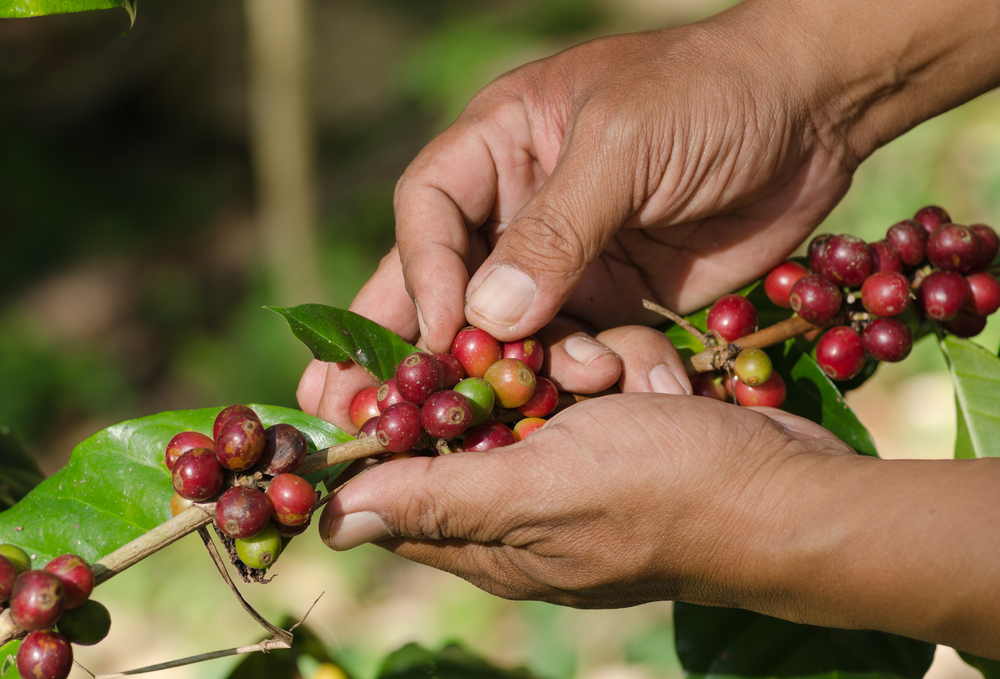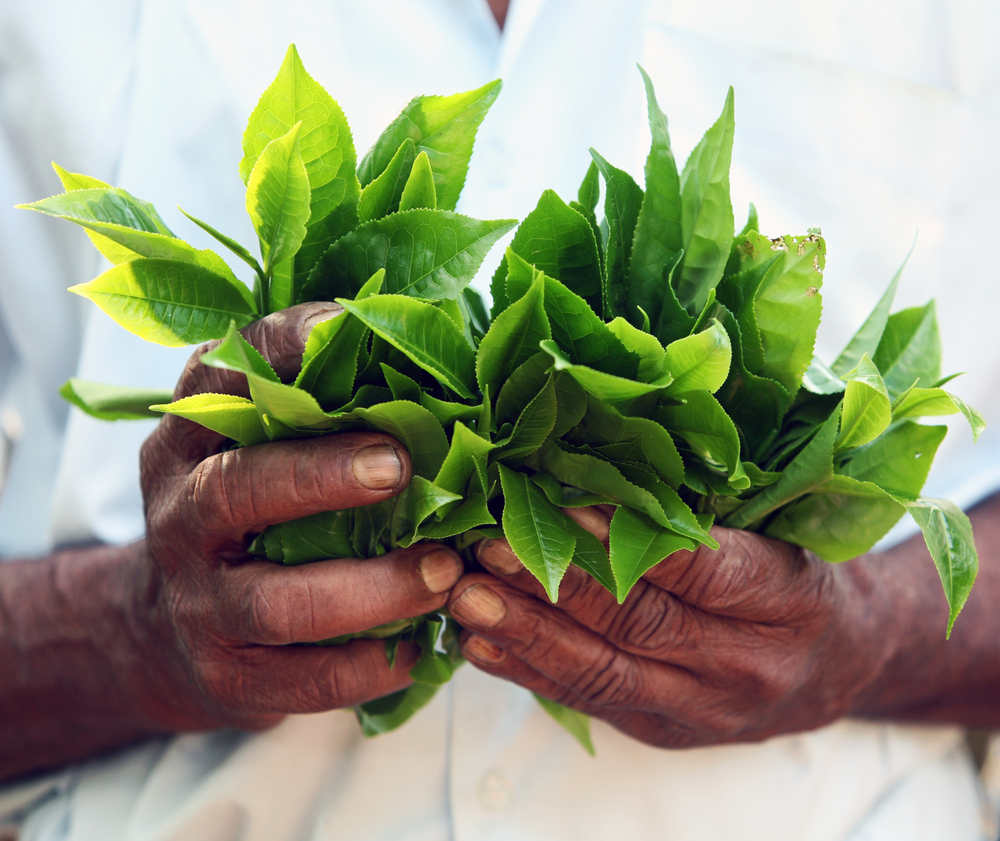Blog post
How to ensure coffee, cocoa, cotton and tea farmers to earn a living income?
Many parties have pledged that farmers in sectors such as tea, cocoa, coffee and cotton are to earn a living income in the future. This, as currently many households in those sectors are not earning enough ‘to afford a decent standard of living for all members of the household’, even after the implementation of certification standards and other programmes aiming to enhance livelihoods.

We use the definition from the Living income community of practice for decent standard of living. It includes elements as: food, water, housing, education, healthcare, transport, clothing, and other essential needs including a provision for unexpected events.
Why are households not earning a living income?
We find that especially small farm sizes and low commodity market prices lead to low household incomes, but that low yields and low opportunities of earning additional income from other sources are also important factors.
Farm sizes are decreasing in many countries because of inheritance structures. Companies operate in competitive markets; if supply is high, this puts pressure on prices: Why would a company pay more for the same product than its competitor? Even if many companies support programmes to enhance livelihoods, there are many competitors that don’t and that buy products for the lowest possible price.
Yield levels are often low because farmers do not manage their farms to maximize yields, often for good reasons. For instance because they do not have enough money to invest in inputs or to sustain a period with lower incomes after replanting their trees or bushes.
Small farm sizes and low prices lead to households not earning a living income, next to low yield levels and low opportunities to earn income from other sources
Sustainability certification and yield improvements are not sufficient
Many support programmes focus on improving incomes through improving yield levels and/or decreasing cost of production, but do not address farm size challenges and price levels.
Certification premiums paid to farmers for mainstream certified produce are often either very low or non-existent, and thus offer low or no direct financial benefits to farmers. Evidence of indirect financial benefits of sustainability certification, for instance through improved yields or through a decrease in cost of production, is scarce. Often support programmes do include a diversification component, but generally in a limited way, not resulting in farmers earning significant extra income through diversification.
In the coffee, tea and cocoa sectors, many farmers have farms that are too small in a situation with oversupply and low prices.
An exception to the rule is Vietnam where a pro-active government and a well-functioning market structure enables most smallholder coffee farmers to earn a living income.

Integrated rural development strategy
An integrated rural development strategy should be developed by governments, companies and civil society to increase farm sizes, set fairer price levels and create structural on-farm diversification and off-farm employment. This is not easy.
Increasing farm sizes
Governments to tackle farm size fragmentation through facilitating land lease, support farmers to find off farm employment so they can move out of agriculture, and legislation.
For instance, land consolidation that leads to bigger farm sizes should be done without harming the rural population. Often, land is the only means of earning an income including a pension for ageing farmers, as there are no safety nets. Solutions should focus on farmers with small parcels leasing their land to other farmers, preferably creating large farms from which a farmer/manager can earn a decent income, while creating other on-farm or off farm income earning opportunities which do not need (much) land. A lower number of farmers would remain working the land.
The government could facilitate such land lease arrangements between farmers and support farmers moving out of agriculture to find off-farm employment. And communicate the benefits of such arrangements to farmers.
In terms of farm sizes, also legislation could be created that sets minimum land sizes, which is combined with legislation that ensures that heirs for instance inherit shares of the land instead of the land itself, which they can then sell or lease to others. Obviously, implementing such legislation could be a challenge to governments which have a myriad of important challenges to be tackled at the same time.
Structural diversification for farmers, first buyers and extension agents
It should be investigated whether there are ways to support structural on-farm diversification; where farmers switch (most of) their production of a certain commodity to another activity.
Together with the farmers it should be reviewed what options they have to earn an income in the future, also taking into account expected climate change effects. Perhaps farmers in certain areas should stop producing tea and change to pineapple production to earn better incomes, or replace cocoa trees by oil palm or rubber. Such reviews could be done by governmental extension agencies and first buyers (such as cooperatives and traders) together with civil society.
Cooperatives and first buyers offering services to farmers should also diversify their activities and offer quality services at a fee for other products than the product they are now supporting. They could also, together with government extension services and civil society, provide farmers with support to overcome challenges in switching income earning activities, for instance by technical assistance, logistics and marketing. This diversification of activities can best be integrated in current services, e.g. selling fertilisers for maize next to fertiliser for tea, and using trucks that are used to transport cocoa beans for the transport of other products.

Setting fair prices based on long term performance based contracts
Farmers should always be rewarded for buyer and consumer requests regarding farm management practices and performance through higher prices, even if in a competitive market. Price levels should thus be fair, such that farmers can earn back their investments plus a margin. But in reality such a price increase should be connected to performance criteria, for instance quality or sustainability, for buyers to be able to sell their products for a higher price in the market.
In Ghana and Ivory Coast cocoa buyers have recently agreed to pay a minimum price of USD 2.6 per kilogram of cocoa to farmers [1]. But given the current farm sizes and cocoa volumes sold by farmers each year, farmers earn on average about USD 230 per month from cocoa with such prices, which is roughly the living income. However, many farmers have smaller farm sizes and lower cocoa yield per hectare than the “average” cocoa farmer. Thus, a large proportion of households still earn less than a living income from cocoa with this price level, even if they also earn an income from other sources.
Long term contracts between buyers and sellers, including a premium for farmer performance e.g. for quality or sustainability [2], can be part of a solution. In this way, farmers earn more because they deliver added value, and buyers can show consumers based on evidence on such performance that they pay farmers a higher price which is why their products are more expensive. But so far we are not aware of any successful examples of this that increase farmer incomes at scale. And still, farm size consolidation and enhanced opportunities for alternative income sources still remain important to address as many farmers would not earn a living income while receiving higher prices.
A final note on setting minimum prices and how to avoid surpluses
Setting minimum farm gate prices leads to unintended consequences: it leads to new entrants in the sector and current farmers to plant new trees/bushes and investing more to improve yields, because the production becomes more lucrative, leading to (bigger) surpluses and (again) a pressure on the prices.
Companies may also shift their sourcing to countries where the product can be bought at lower prices. In most sectors regional price setting is not possible as the production is not concentrated enough to avoid such dynamics. If a minimum price is agreed upon, then, at the same time, the government and the private sector should find, and implement, a solution to avoid surpluses.
Wageningen University & Research can help to design strategies for increasing farmer incomes
Wageningen University & Research has much experience globally in working with governments, the private sector and civil society to improve farmer livelihoods and environmental sustainability. Including co-designing rural development policies, value chain and landscape intervention strategies, and land use and land reform policies. Want to know more?
[2] Note that there will always be products on the market of lower quality as there is a market for lower quality and lower priced products. Premiums for quality therefore are not a solution for all farmers.